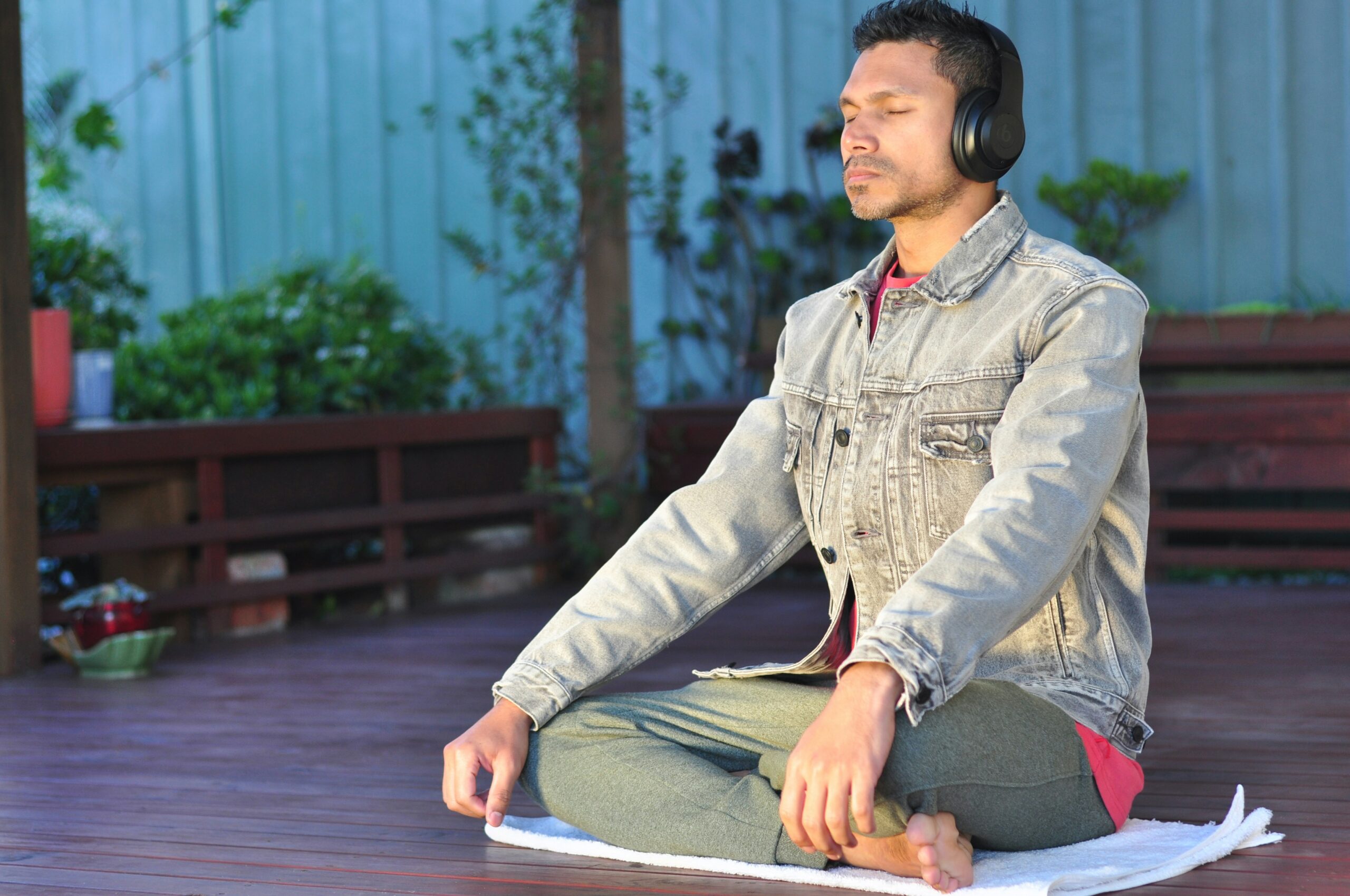Health Optimization: 5 Powerful Metrics to Unlock Peak Performance and Thrive

We live in a world with adaptation. We establish our morning routine for maximum productivity, optimize our finances for better returns, and curate our digital life for an endless stream of materials. Still, when it comes to the most basic property, our own good, we are often blinding the blind. We often rely on vague feelings of being “fine” or “running a little” to understand what really happens beneath the surface, without real data.
Real health is not just the absence of illness; This is a living state of physical, mental, and emotional welfare that allows you to show yourself every day as your best self. This is a top performance that is the basis of life. But what you measure cannot be adjusted. A vague perception of well-being requires changes in data from estimated to enter into health conditions.
It’s not about being a biohazard with a lab in your basement. It’s about becoming a conscious architect of one’s own vitality. By tracking some important, available calculations, you can gain intensive insight into the internal function of your body, make informed decisions, and really control your health. Let’s dive into five essential matrices that provide a crystal clear window into your general health and how to start tracking them today.
Table of Contents
1. Resting Heart Rate (RHR): The Silent Messenger of Your Cardiovascular Health
Your heart is a tireless motor for your entire existence, and its rhythm tells a story. Your relaxing heart rate (RHR) is the number of heartbeats per minute, while you are completely relaxed – the first is measured for the first time in the morning, before getting out of bed.
1. Why does it mean something to your health:
Think of your heart as a muscle. A low RHR usually indicates a strong cardiovascular system and better aerobic fitness. When your heart is effective, it doesn’t have to work so hard to perform its basic duties, which reduces stress throughout the system. On the other hand, a high RHR can be a red flag for poor condition, dehydration, stress, or even underlying health problems.
Tracking your RHR over time gives you incredible insight into recovery, fitness, and general stress load. If you notice that your RHR is more than 5-10 beats above normal, this is the way your body waves a flag. It can fight a disease, you can be overtraining, or you can be stressed chronically. This first warning system allows you to take active steps for your health, such as prioritizing sleep, taking a rest day, or dealing with your stress, a small problem before you become a big problem.
2. How to Track it:
Manual method: First thing when you wake up, find the pulse of the wrist or neck. Calculate the number of beats in 30 seconds and multiply by 2. For better accuracy, count for a full 60 seconds.
Technical method: Portable devices such as Fitbit, Apple Watch, Garmin, or Aura Ring are fantastic for this. They automatically track the RHR overnight and provide a night average and trend over time, making it possible to read the most accurate rest.

2. Heart Rate Variability (HRV): The Ultimate Benchmark of Your Body’s Resilience
If you only upload one new metric to your toolkit, make it Heart Rate Variability (HRV). While it sounds complicated, its meaning is powerful: HRV is the subtle variation in the time between every heartbeat. Contrary to what you might suppose, a healthy heart does not beat with the monotonous regularity of a metronome. The tiny, millisecond versions between beats are a superb element.
1. Why It Matters for Your Health:
HRV is considered by many professionals to be the ultimate first-rate goal dimension of your autonomic nervous system (ANS) balance—the interaction between your “fuel pedal” (sympathetic apprehensive device, for pressure) and your “brake pedal” (parasympathetic frightened system, for relaxation and digestion). An excessive HRV shows a resilient, adaptable system that may manage stress efficiently and recover quickly. A low HRV suggests your frame is under strain—from physical schooling, emotional stress, illness, or bad sleep—and is stuck in a more stressed, “fight or flight” state.
Your day-by-day HRV rating is sort of an everyday report card from your frame. It tells you if you are geared up to tackle a tough workout, or if you need to instead choose a walk and some stretching. It reflects your capability for health and performance. Ignoring a continually low HRV and pushing through with extreme exercising is a quick route to burnout and damage. Honoring its key to sustainable health optimization.
2. How to Track It:
HRV requires a wearable tool like an Oura Ring, a Whoop strap, or, better yet, a Garmin watch. These devices use optical sensors to seize the records whilst you sleep, presenting a unmarried, easy-to-interpret score every morning. The apps will also frequently give you context and hints primarily based on your score.
3. Sleep: The Non-Negotiable Pillar of Health Optimization
You can eat all organic food and crush all the workouts, but if you ignore sleep, you arm the entire healthcare mission. Sleep is not inactive shutdown; This is an incredibly active period where your body repairs tissue, balances hormones, consolidates memories, and cleans metabolic waste from the brain. It is important to track sleep because we are notorious for clearly recognizing our quality.
1. Why does it mean something to your health:
Constant poor sleep is disastrous for all aspects of your health. This interferes with hormones that regulate appetite (ghrelin and leptin), causing suction and weight gain. It focuses on cognitive function, memory, and focus. This weakens your immune system, makes you emotionally reactive, and increases the risk of chronic diseases. For real health, prioritizing sleep is the highest production investment you can make.
2. What to track beyond just hours:
While the total time is important (the target is 7-9 hours), the quality of that sleep is important. The most important stages to understand are:
REM SLEEP: Mental Recovery, Memorial Processing, and Emotional Regulation are essential.
Sleep delay: How long does it take you to sleep (ideally less than 20 minutes)?
Sleep stability: to lie down and wake up at the same time, even on weekends.
3. How to Track it:
Wearables are again excellent here, which provides the breakdown of the sleep stages. Even without a device, you can track:
Sleep time in bed versus time: Be honest, how long do you really sleep?
How are you when you wake up? Do you feel rested? Or do you need to hit Snooze five times?
Energy level: Pay attention to your energy throughout the day. An accident in the middle of the papers is often a sign of poo

4. The Way You Feel: Subjective Data is Real Data
In our search for quantitative data, we should not reject qualitative data. How are you a valid and important calculation? Your subjective experience is a reference to all your objective numbers. A workout that seems normally easy can make it feel incredibly difficult if your HRV is low and your RHR is high. Your body is constantly communicating with you; You just have to learn to listen.
1. Why does it mean something to your health:
The number can tell you what is happening, but your feelings can often tell you why. Keeping an eye on your mood, energy, inspiration, and stress level creates a comprehensive picture of your health. This practice, often called mindfulness, allows you to connect physical sensations with lifestyle options. You can see that your energy falls after eating a certain meal, or your concern arises after a lot of screen time. This self-awareness is the basis for personal health adjustment.
2. How to Track it:
It can be as simple or as wide as you want.
Ironling: Spend 2 minutes every morning or evening keeping your energy level (1–10), mood, stress, and any remarkable physical feelings.
App Assisted: Many mood-tracking apps allow you to log in to your stock data, as well as these subjective matrices quickly, which reveal powerful correlations.
Adaptation objectives: The target pattern is to identify. Leading a bad night’s sleep to a day of low energy and high creeps? Do the morning walks constantly improve your mood? Use this insight to make a lifestyle that makes you feel alive and flexible. This is the essence of general health.
5. Blood Work: The Internal Health Dashboard
While the Daily Matrix provides daily trends, wide blood work is under the hood of your car for a wide range of clinical. It provides a unique, targeted snapshot of your internal health and reveals everything from vitamin deficiency to metabolic markers and hormonal balance that is impossible to understand from the outside.
1. Why does it mean something to your health:
You can sleep with a great HRV and 8 hours at night, but if you have a severe vitamin D deficiency, the immune system and mood will be damaged. If your blood sugar markers creep, you may be heading for insulin resistance long before you feel any symptoms. Blood work provides “why” behind persistent symptoms such as fatigue, brain fog, or weight plateau. This leads you from reactive medicine to active, preventive health care, so you can cure an imbalance before you get sick.
2. How to Track it:
Make an annual physical schedule with the doctor for primary care and ask for a complete blood function. For a more advanced appearance, companies such as InsideTracker and Function Health offer individual recommendations for detailed blood analysis. The goal is to achieve an Aadhaar line and then withdraw every 1-2 years to track your progress.
6. Bringing It All Together: The Symphony of Health
Tracking these five matrices is not about developing a binding passion with data. This is about growing a deep interaction with your body. Each calculation is a tool in your health symphony:
Relaxing the heartbeat is a stable drum.
The heart rate variability is the leader, who establishes pace and balance.
Sleep is the rest period that lets musicians recover.
How you feel, the emotional experience of music is melody.
Blood work is noted; it is all built into the original structure.
When they are all in harmony, you create an excellent work with top performance and vitality. Start little. Choose a calculation to inspect for a few weeks. Notice how it changes with your lifestyle. Then add another. Over time, you will become an expert on your own body and will be authorized to create a strong alternative with knowledge that not only stops the disease but also actively creates a production
Q1: How often should I check these metrics?
A: Sleep and mood can be tracked daily; RHR and HRV are best monitored each morning; blood biomarkers should be tested every 3–12 months, depending on your health goals.
Q2: Do I need special devices to track HRV and RHR?
A: While wearables (like Oura, Whoop, or Apple Watch) make tracking easy, many smartphone apps can estimate HRV using your camera—though dedicated devices offer greater accuracy.
Q3: Can improving these metrics really boost performance?
A: Absolutely. Optimizing these five areas enhances focus, stamina, recovery, and emotional regulation—key pillars of peak mental and physical performance.










